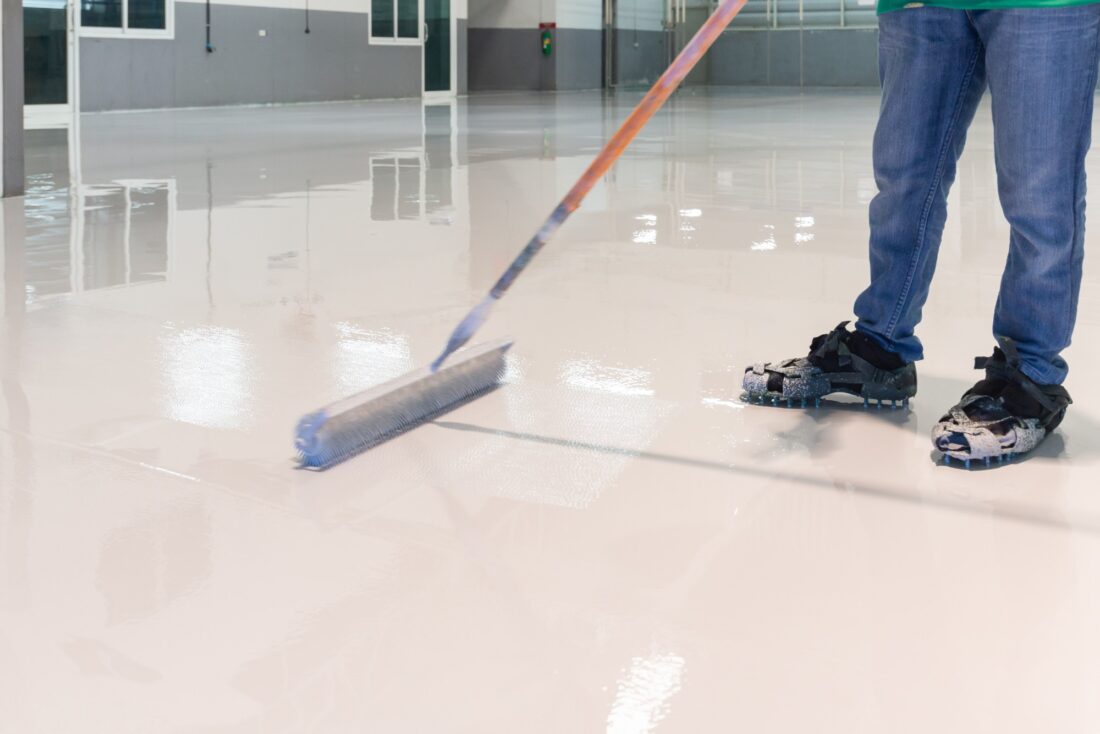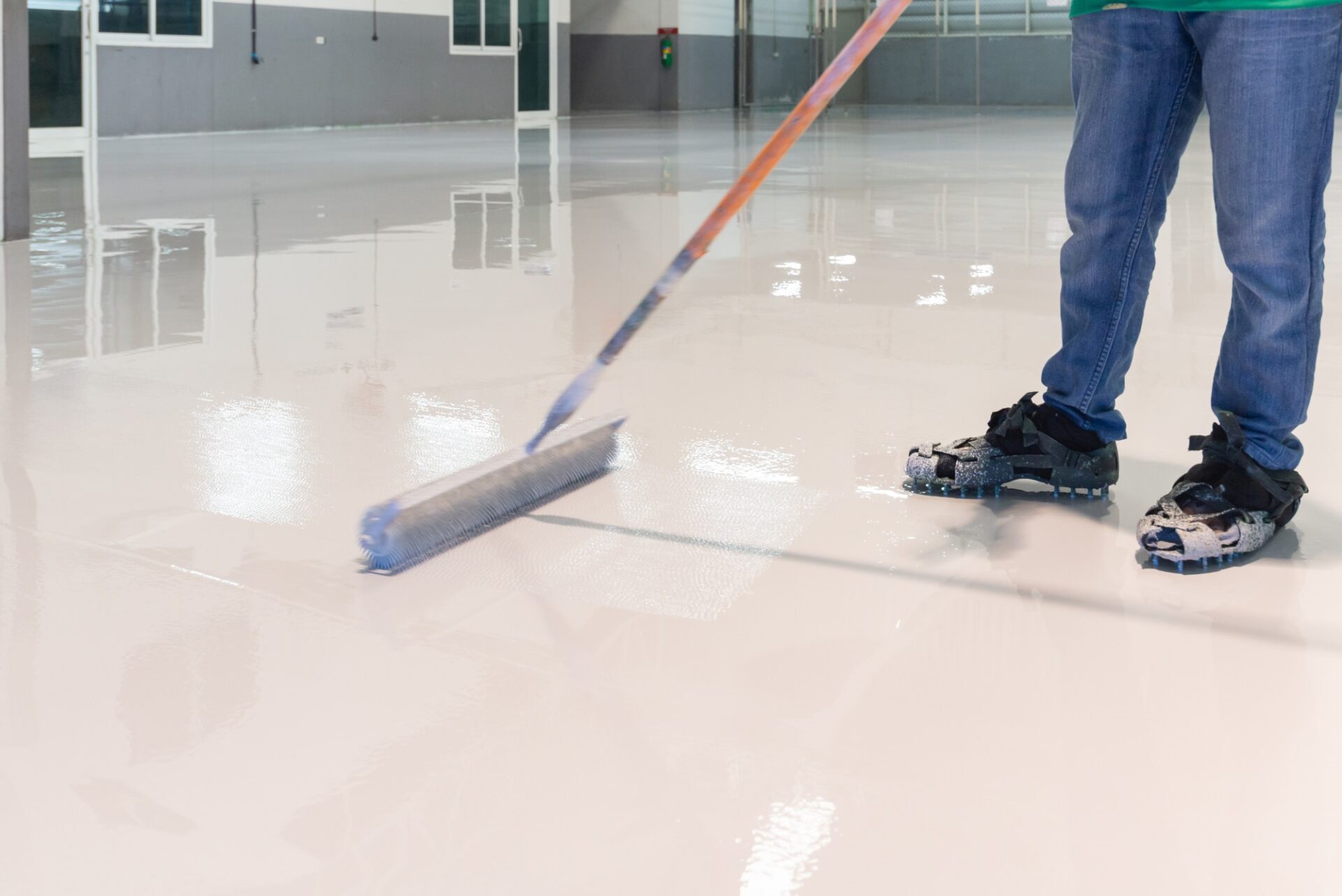
Did you know that in the States, flooding is the most common natural disaster? If you want to learn about flooring options, we can help.
In this guide, we’ll go over flooring options for flood zones.
Want to learn more? Keep reading.
1. Waterproofed Concrete
Waterproof concrete emerges as a cost-effective flooring option, particularly suitable for basements. If you’re interested in this option, consider contacting a Concrete Flooring company to have it professionally installed. They can ensure that the concrete is laid properly, providing you with a durable and waterproof flooring solution for your basement.
The concept is straightforward: your basement’s raw subfloor gets sealed with a waterproofing floor and wall sealer, giving it a clean, functional, and dry appearance – almost like it’s painted with white paint.
Waterproofed concrete not only keeps your basement dry and functional but also proves to be budget-friendly for flood-prone areas. It’s a task that’s not too tricky to tackle on your own, even though it may lack the insulation and aesthetic appeal of other options.
Considering the unpredictable nature of floods, it’s wise to be prepared for any water-related challenges. In the unfortunate event of a flood or water damage, swift action is key. Explore professional services in water damage restoration to efficiently mitigate and repair any damage caused, ensuring the longevity and resilience of your chosen flooring.
2. Tile Flooring
Tile flooring also needs to get adhered down with a thin-set mortar if you use it in a wet environment. In a damp climate or areas prone to floods, you’ll want to look at getting a professional installer to do the job.
The tile is waterproof, so the fluid cannot pass through the flooring. Tiles are also highly resistant to mildew, mold, and water. It’s easy to clean tile flooring, and the flooring is quite durable. Additionally, you can enhance durability by using waterproof and Ready Mix Adhesive for Tiles from Dunlop Trade or other trusted companies.
The tile is also a bit cool as the subfloor. You could look at getting radiant heating installed below the tiles.
If you install over a concrete subfloor that’s settling or cracking, the tiles could settle too.
3. Treated Concrete Flooring
Treated concrete is concrete flooring that has a coating applied to it. A typical layer used on concrete floors is epoxies or stains.
A stain will add depth and color to the floor surface. An epoxy floor is the most common type of flooring coating you’ll find in garages. An epoxy floor is resistant to solvent and oil spills.
Stains are easier to apply once the subfloor gets cleaned. Epoxy is a little more challenging to install. Stains aren’t expensive and are moisture resistant.
If you aim to complete the job on your own, you’ll need to pay attention to detail. The base concrete needs to get perfectly cleaned. The finished surface will need to get treated with a sealant for stained concrete.
Concrete flooring isn’t an excellent insulator. There’s no way to add heat to warm the floor surface. Epoxy coating is a bit more expensive.
4. Vinyl Flooring
You can get vinyl flooring in planks, rolls, or tiles. Vinyl sticks to the floor by using a latex flooring adhesive. Most vinyl tile options are self-sticking. You can install them on your own.
Look for vinyl flooring with an interlocking edge. This way, you don’t have to use an adhesive.
It’s recommended to stick down vinyl flooring in an area prone to flooding.
Vinyl flooring is easy to clean. The surface is also resistant to mildew and mold.
Rolled vinyl has few seams so that the water can’t get below the surface. It’s also an inexpensive flooring option.
The only drawback with vinyl is it feels cold to the touch.
5. Rubber Flooring
Rubber flooring has different thickness and color options. Rubber is available in straight cut tiles, rolls, and interlocking tiles.
A standard flooring that’s bought often is black rubber flooring because it’s low in cost.
Rubber comes from a cheaper raw material, which’s recycled rubber tires. Brighter rubber is more expensive because it’s made from virgin rubber.
When you use rubber flooring in a flood-prone area, you should also use double-sided carpet tape. This way, if a flood occurs, you can lift the flooring and move it to a spot to dry out.
You could also flip it over, so both sides have a chance to dry out. If you prefer to glue down the flooring, try moisture cured polyurethane adhesive. The adhesive holds together in the event of a flood.
Rubber flooring is resistant to mildew and mold. Black rubber flooring is a cheaper option, and you can install it on your own.
If loose laid, the flooring is easily removed, and you can allow the area and flooring to dry faster after a flood.
Colorful rubber is more pricey, and it’s not the greatest insulator. The floor will feel chilly as a subfloor unless you get radiant heating below the rubber.
The rubber is also a bit heavy if you use large rolls of rubber flooring.
6. Cork Flooring
For a flood-prone basement, you could also consider cork flooring. Cork flooring is a trendier option and is more popular because people are looking for textured designs.
Cork will work well for basements because it doesn’t promote bacterial growth. The water that seeps into the crevices and cracks after a flood can cause mold issues.
If you experienced a flood or water problem before, take your time choosing new flooring. You’ll also want to address any issues that could cause flooding.
Consider if this is a job you can complete on your own or if you’ll need to hire someone to do it. If you prefer hardwood floor, check out reallycheapfloors.com.
Now You Have Some Flooring Options
We hope this guide on flooring options was helpful. Now that you know what flooring to choose for flood zones consider what one you’ll choose.
Browse our other helpful resources on home, business, and more.
